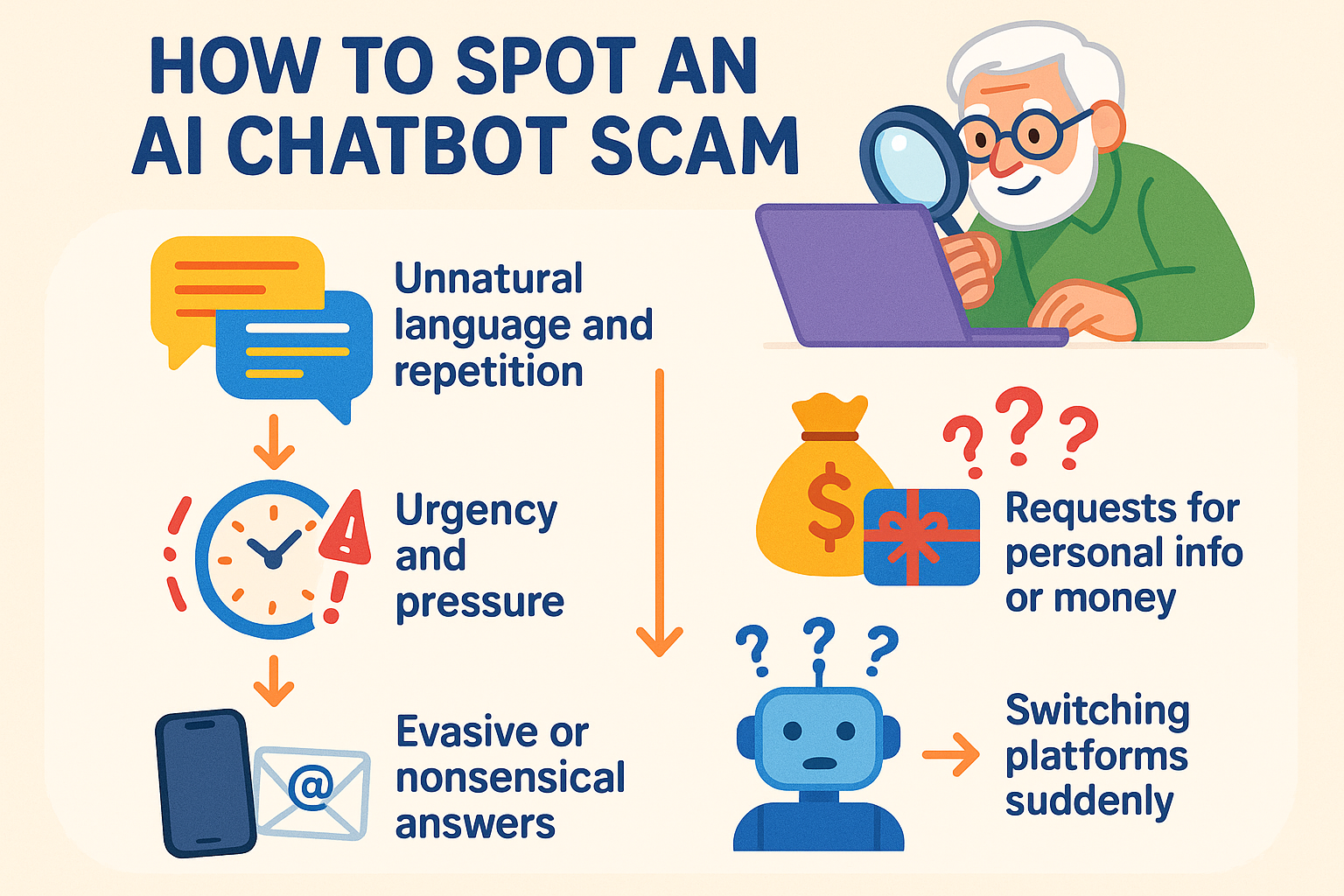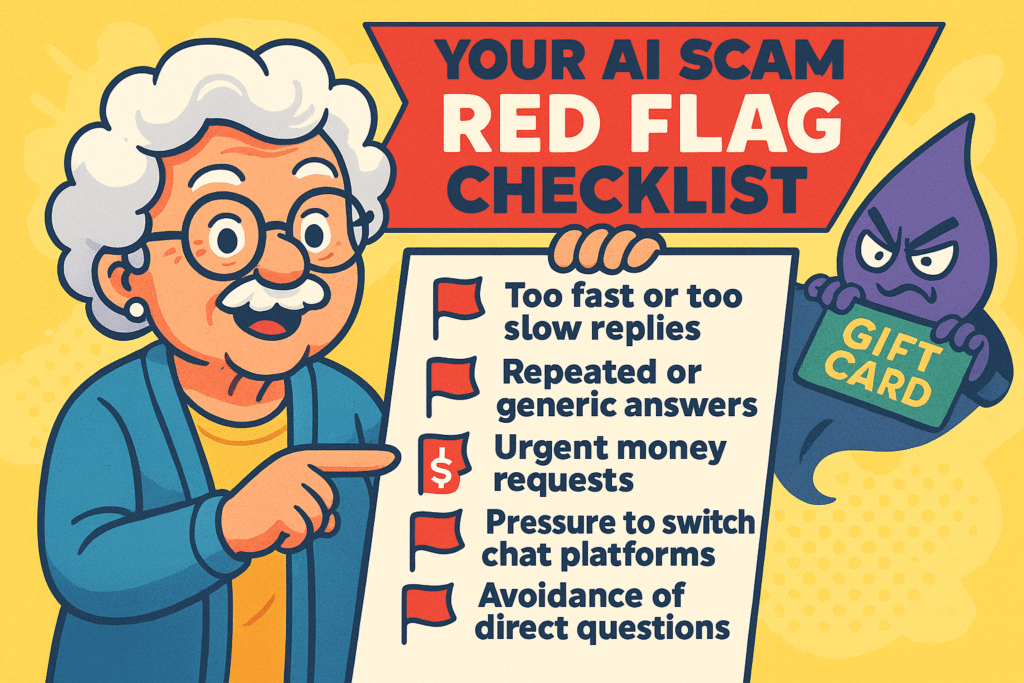
Newsletter Subscribe
Enter your email address below and subscribe to our newsletter

The other day, I got a pop-up on a website. “Hello!” it said, chipper as a songbird. “My name is Brenda. How can I help you today?”
I needed to know if they shipped to Antarctica, a pressing question for my penguin-related hobbies. So, I asked Brenda.

Her response was instant. “We offer robust shipping solutions for your needs!”
Okay, Brenda, but what about the penguins? I asked again.
“Our logistics network is optimized for global delivery!” she replied, with the same unblinking enthusiasm.
It was then I realized Brenda wasn’t a perky customer service agent. Brenda was a robot. A robot who, I suspect, has never had to worry about a package getting pecked to pieces by a grumpy penguin.
This was a harmless bot, but it highlights a new wrinkle in our digital lives: it’s getting harder to tell who—or what—we’re talking to online.
And while some bots are helpful Brendas, others are digital wolves in sheep’s clothing, designed by scammers to trick us.
So, how do you tell the difference and keep yourself safe from the AI scam bots? Let’s grab a cup of coffee and figure it out.
Think of a chatbot as a computer program you can have a conversation with. The “AI” part, which stands for Artificial IntelligenceArtificial Intelligence (AI) is basically when computers get smart—really smart. Imagine if your c... More, just means the program is smart enough to understand your questions and give you answers that (usually) make sense.
Most of the time, these bots are the good guys. They’re the digital receptionists who help you book a doctor’s appointment, the tireless assistants who can check your order status at 3 a.m., or the friendly guides who answer basic questions on your bank’s website. They’re built for speed and efficiency.
But, like any tool, scammers have figured out how to use them for mischief. They create “bad bots” to impersonate legitimate companies, romantic interests, or even government agencies. Their goal isn’t to help you; it’s to rush you into giving away personal information or money.

Here are the most common playgrounds for these scammer bots:
Spotting a scam bot feels like a superpower, and it’s one you can easily learn. Scammers rely on speed and emotion to make you act before you think. All you have to do is slow down and look for the tell-tale signs that your chat partner might be more machine than man.

A human conversation has a certain rhythm. An AI bot, trying to imitate that, often gets it slightly wrong.
Bots don’t need to type. They can respond instantly, which is often a dead giveaway. On the flip side, some are programmed with artificial delays that feel unnatural. If the responses are either inhumanly fast or have strangely consistent pauses, be suspicious.
This is where my penguin-shipping “Brenda” failed the test. I asked a specific, real-world question. She gave me a vague, canned answer.
Try this: ask a question only a human could answer.
A bot will likely evade, give a generic non-answer (“I am a digital assistant and do not eat breakfast”), or change the subject back to its goal.
This is Scamming 101. Scammers, bot or human, want to create a panic. They don’t want you to have a moment to breathe, think, or call a friend for a second opinion.
Legitimate companies do not operate this way. Urgency is a massive red flag. For more ways to protect yourself, check out these essential online safety tips for navigating the web securely.
A real customer service agent’s job is to solve your problem. A scam bot’s job is to get your data. If the very first thing a “support agent” asks for is your password, full social security number, or bank account details, slam on the brakes.
The same goes for anyone demanding payment in unusual ways, like gift cards, wire transfers, or cryptocurrency. No legitimate business will ever ask you to pay a bill with an Amazon gift card.
If your internal alarm bells are ringing, trust them! You don’t need to be polite to a potential scammer bot.
Most importantly, talk about it! There is zero shame in being targeted.
These scams are designed by professionals to be incredibly convincing. Telling a friend or family member about a suspicious message not only helps you gut-check the situation but also warns them to be on the lookout.
It’s a computer program designed to chat with people. Think of it as a script that can understand questions and provide pre-programmed answers, but it’s getting smarter every day at sounding human.
Absolutely not! The vast majority are harmless and helpful. They schedule appointments, answer simple questions, and guide you through websites. The key is to know the red flags so you can spot the few bad apples.
Treat any chat window with caution. Never share your passwords, full Social Security number, bank account numbers, PINs, or the security code on the back of your credit card.
Scammers often get information from public sources, like your social media profiles. The more you share publicly—your city, your family members, your hobbies—the more ammunition a scammer has to create a personalized and convincing message.
Navigating this new digital world can feel a bit like learning a new dance. It takes a little practice, but once you know the steps, you can move with confidence.

By learning to spot these robotic red flags, you’re not just protecting yourself—you’re becoming a savvier, safer digital citizen. So stay curious, stay cautious, and don’t ever be afraid to hang up on a rude robot.